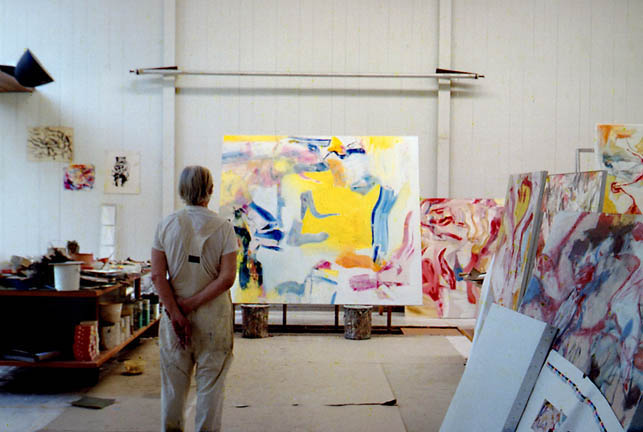Born in Rome in 1849, John William Waterhouse entered the Royal Academy in 1870. His initial training was in sculpting but came out to his first exhibition as a painter. Known as a late Pre-Raphaelite artist and one of the famous painters of the Victorian Era, his paintings contain consistent subjects which are of classical and literary figures. Two of the characters who take center stage in his paintings are Shakespeare's tragic heroine,
Ophelia and Tennyson's
The Lady of Shalott.
 |
Waterhouse painting the Lady of Shalott in his studio (1891)
Source: wiki.cultured.com |
Ophelia is the famous characters of Shakespeare's
Hamlet. She is Hamlet's sweetheart who went into madness after he told her that he never loved her which lead to her drowning herself. The innocence of her character is one her qualities which is often romanticized. Waterhouse depicted her in three ways which all have a common element: a body of water, a meadow and poppies. The 1894 painting is very keen on this idea as it shows her just before she falls into the water. Angus Trumble points out this foreshadowing, pointing out the poppies which symbolize death and sleep, her closed eyes and the paleness of her skin and hair (
victorianweb.org)
 |
Ophelia (1894)
Source: Barton Galleries |
Tennyson's poem
The Lady of Shalott is the story of Elaine of Astolat who was cursed into a castle to watch the world from shadows and fell in love with Sir Lancelot as she saw him pass by. She escaped to Camelot using a boat but died just before she met him. Upon the sight of her, he remarked that she was lovely. She was depicted in two ways, one is of her first sight of Lancelot and the second, floating on her small boat towards him. Elizabeth Nelson describes a hint on the turn of events by describing the candles as reinforcing the "funereal tone of her embarkation." (
victorianweb.org)
 |
Lady of Shalott (1888)
Source: University of Adelaide Book |
In an article by Richard Dorment he described Waterhouse paintings as "slick, professional and completely empty of real feeling or thought. A pleasant void." (
telegraph.co.uk). According to him it showed his skill yet lacked a emotional connection for its viewers. There is something "one-dimensional" about his work that should be present to make him a greater artist.
On the other hand, Brian Sewell said in his article that the
The Lady of Shalott was a complex painting in its own element. According to him, Waterhouse challenges his viewers to think and that "once in a while the viewer must construct the tale from the evidence that Waterhouse has given him." (
standard.co.uk).
Waterhouse's work only came about after the Pre-Raphaelite Brotherhood was disbanded. This movement was pioneered by artists who became tired of the dull landscapes of academic paintings and thus reviving the style of painting between the Medieval period and the Renaissance which was that of Raphael Sanzio. This type of painting was also prolific during the Victorian Era because of society's patronizing of courtly love and romanticism. Romantic novels and poetry were widespread and gave way to people's ideas.
Whether this style of art is applicable to our time is subjective. It may have pleased the people during the nineteenth century but our contemporary society might be searching for different aesthetics.Though, people who are interested literature can well appreciate this kind of painting. But we must always remember, isn't art subjective and beauty in the eye of the beholder since we hold our own experiences and opinions?
References:
Dorment, Richard.
Waterhouse: the modern Pre-Raphaelite, at the Royal Academy - review. The Telegraph, 29 May 2009. Web. 25 June 2014.
Sewell, Brian.
Phwoar! It's John William Waterhouse. London Evening Standard, 25 June 2009. Web. 25 June 2014.
"Ophelia". The Victorian Web. George Landow, n.d. Web. 25 June 2014.
Nelson, Elizabeth.
Pictorial Interpretations of the "Lady of Shalott": The Lady in her Boat. The Victorian Web. 30 Nov 2004. Web. 25 June 2014.
































